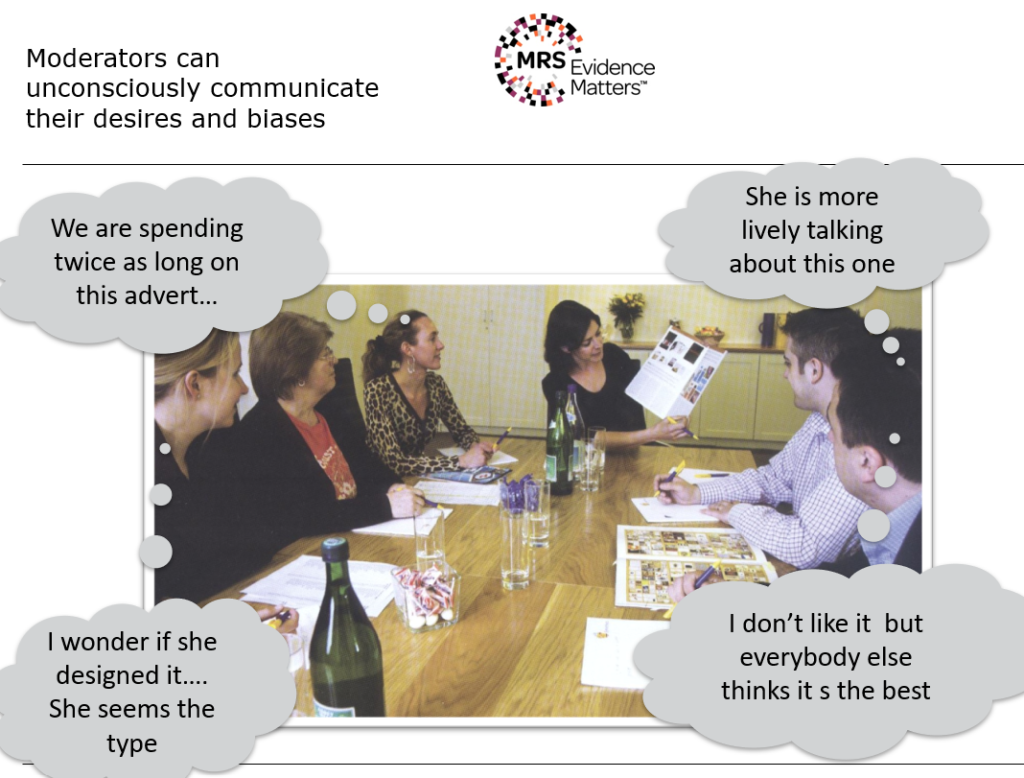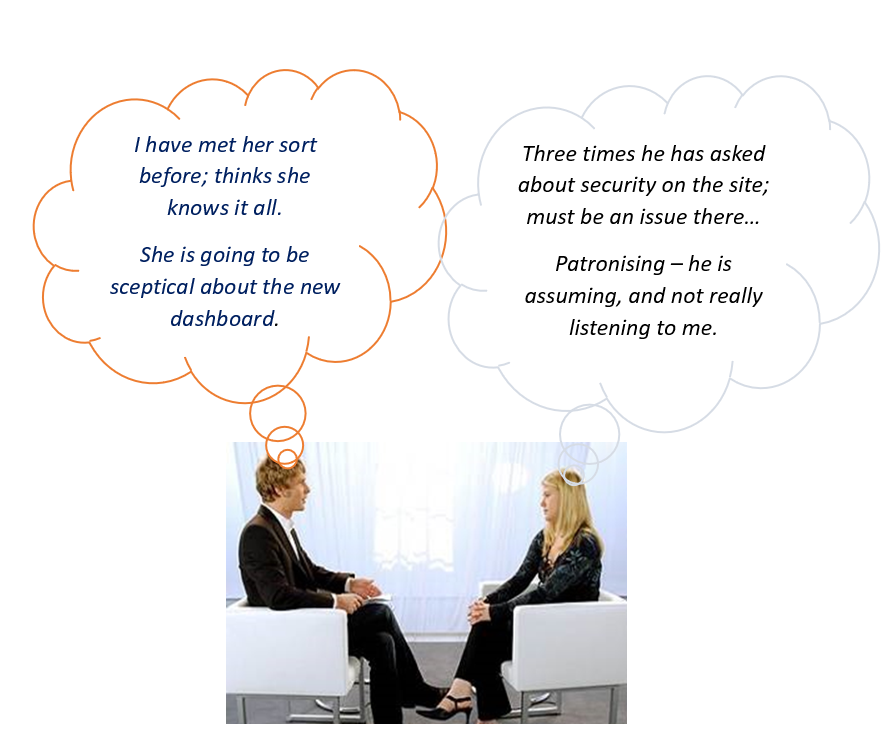
One aspect of human intelligence is striving to predict the future. The brain notices patterns, anticipates events based on past experience, and makes predictions. This helps us navigate and make sense of our world, BUT, surprisingly, this can also lead to poor qualitative research.
These nonconscious processes can leak out and be noticed by respondents. They are curious as to what the research is really about. They will read the moderator or interviewer’s tone of voice and body language:
- What are they spending most time on?
- What do they seem most interested in?
- Where is their energy being directed?


3 main things you can do to avoid biasing the results of the research.
Surface your biases and expectations before you start.
Develop an open, and non-judgmental attitude
Use best practice in interviewing – it’s designed to help avoid leading and check your understanding of the responses as you go.
1. Surface your biases and expectations
Simple: discuss and note down your hypotheses about the topic. When writing the guide and interviewing, be clear that these are your ideas and you could be wrong.
Next level: Choose a relevant test to check your stereotypes about age, weight, ethnicity etc. (There are 14 altogether).
Harvard Implicit Association Test
Professional: do the Bracketing exercise as used by academic researchers, so you can understand and set aside biases and prejudices during the research
2. Have an open, non-judgemental attitude
Start with EMPATHY – recognise and experience the thoughts of others AS IF they were your own.
Be GENUINE – be yourself, don’t play a role. Being authentic allows respondents to do the same.
Be NON-JUDGEMENTAL. You will meet many people who do things you don’t agree with or approve of. Accept they have their reasons – and discover what they are.
This is hard, especially since you should not give your own opinions or indicate what you think in any way. Remember: IT’S NOT ABOUT YOU. IT’S ABOUT THEM.
3. Use Best Practice in Interviewing
OPEN questions stop you making leading suggestions
PROBE the words they use to more fully understand their point of view.
PARAPHRASING allows you to show empathy without saying what you feel
SUMMARISING helps keep you on track and allows you to check you have understood them correctly.
Introduce new ideas using STIMULUS MATERIAL so you don’t have to read out loud or explain things.